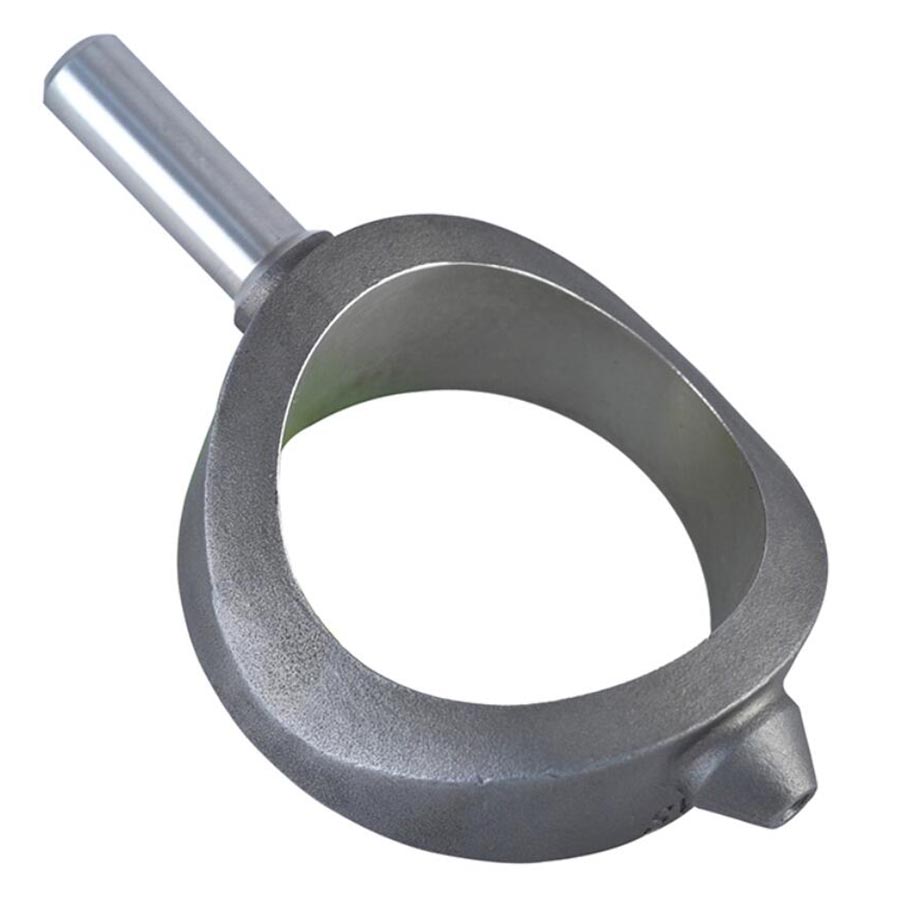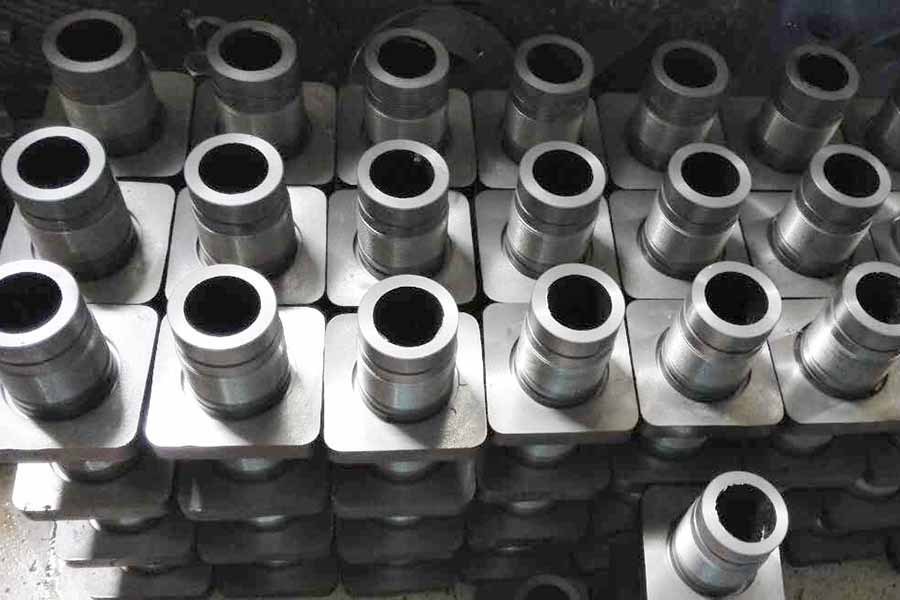
Alloy Cast Steel Foundry
Material: Alloy Cast Steel Process: Investment Casting Weight: 1.78 kg
Alloy Cast Steel Foundry with OEM Casting Service and Machining Service
Alloy Cast Steel Foundry with OEM Casting Service and Machining Service
Cast steel components are generally produced by lost wax casting (investment casting), vacuum casting and lost foam casting processes with materials of carbon steel, alloy steel and stainless steel. However, for some steel castings of big size, the sand casting or shell molding casting may be considered to economic options. Which one should be chose in real production depends on the budget and exact requirements from the end-users or usage.
▶ Casting Process of Cast Steel
✔ Lost Wax Casting
Investment (lost wax) casting is a method of precision casting complex near-net-shape details using replication of wax patterns. It is a metal forming process that typically uses a wax pattern surrounded by a ceramic shell to make a ceramic mold. When the shell dries, the wax is melted away, leaving only the mold. Then the casting component is formed by pouring molten metal into the ceramic mold. Also called precision investment casting, lost wax casting could achieve complex forms with exceptional surface qualities for both small and large casting parts in a wide range of materials such as carbon steel, alloy steel, stainless steel...etc. lost wax casting offers tighter dimensional tolerances, better surface finishes, produces near-net shape parts which therefore require less machining and other processing, and allows for the steel casting of complex-geometry parts and intricate details such as casting marks and company logos.
Advantages of Investment Casting Components:
• Excellent and smooth surface finish
• Tight dimensional tolerances.
• Complex and intricate shapes with design flexibility
• Capability to cast thin walls therefore a lighter casting component
• Wide selection of cast metals and alloys (ferrous and non-ferrous)
• Draft is not required in the molds design.
• Reduce the need for secondary machining.
• Low material waste.
✔ Lost Foam Casting
Lost foam casting process produce near the near net shape casting parts with lost patterns made from expandable polystyrene, EPS. The EPS positive patterns are mounted to a casting system. After dressing, the pattern clusters are inserted into pouring vessels, which are then filled with unbound quartz sand. During casting, the patterns remain in the compacted sand mould.
Advantages of Lost Foam Castings:
• Greater design freedom in the construction of cast parts
• Small quantity is possible due to the layered structure of the pattern.
• Lower need for secondary machining with near net shape.
• High flexibility by short start up lead time.
• Longer EPS mould span life, thus lower average tool costs
✔ Vacuum Casting (V Process Casting)
Vacuum castings are the metal parts that are produced by the vacuum casting method, which is also called v process casting or vacuum molding casting. They are different from typical investment castings due to the technique used to create the molds. The process begins by placing a two-piece mold in a vacuum chamber. The vacuum then draws the molten metal into the mold. Finally, the casting is solidified in an oven and the mold is removed in order to release the final product.
▶ Raw Materials of Cast Steel as per standard or customized chemical compositions and mechanical properties.
• Carbon Steel: AISI 1020 - AISI 1060,
• Steel Alloys: ZG20SiMn, ZG30SiMn, ZG30CrMo, ZG35CrMo, ZG35SiMn, ZG35CrMnSi, ZG40Mn, ZG40Cr, ZG42Cr, ZG42CrMo...etc on request.
• Stainless Steel: AISI 304, AISI 304L, AISI 316, AISI 316L, 1.4404, 1.4301 and other stainless steel grade.
▶ Capabilities of Cast Steel Components
• Max Size: 1,500 mm × 1000 mm × 500 mm
• Weight Range: 0.5 kg - 500 kg
• Annual Capacity: 5,000 tons - 6,000 tons
• Tolerances: On Request.
▶ How We Inspect the Cast Steel Components:
• Spectrographic and manual quantitative analysis
• Metallographic analysis
• Brinell, Rockwell and Vickers hardness inspection
• Mechanical property analysis
• Low and normal temperature impact testing
• Cleanliness inspection
• UT, MT and RT inspection
▶ Post-Casting Process
• Deburring & Cleaning
• Shot Blasting / Sand Peening
• Heat Treatment: Normalization, Quench, Tempering, Carburization, Nitriding
• Surface Treatment: Passivation, Anodizing, Electroplating, Hot Zinc Plating, Zinc Plating, Nickel Plating, Polishing, Electro-Polishing, Painting, GeoMet, Zintec
• Machining: Turning, Milling, Lathing, Drilling, Honing, Grinding,
▶ General Commerial Terms
• Main workflow: Inquiry & Quotation → Confirming Details / Cost Reduction Proposals → Tooling Development → Trial Casting → Samples Approval → Trial Order → Mass Production → Continuous Order Proceeding
• Leadtime: Estimatedly 15-25 days for tooling development and estimatedly 20 days for mass production.
• Payment Terms: To be negotiated.
• Payment methods: T/T, L/C, West Union, Paypal.

Alloy Steel Castings
 русский
русский



